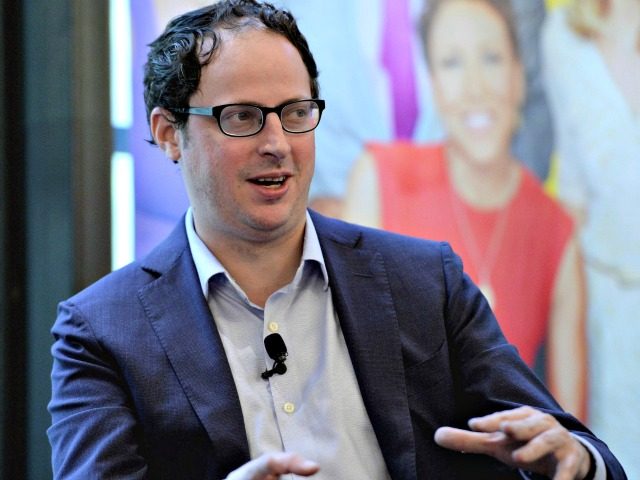American media missed the rise of Donald Trump because they spent too much time talking to each other and too little looking at factors that challenged their conventional wisdom.
That was the conclusion of Nate Silver, purveyor of fivethirtyeight.com and perhaps America’s leading political numbers cruncher.
“Journalists should recalibrate themselves to be more skeptical of the consensus of their peers,” Silver wrote in the last of his nine-part series “The Real Story of 2016,” which appeared Friday.
Silver said journalists rejected information that could have led them to conclude the Hillary Clinton campaign was not the slam dunk they perceived it to be. He said they got convinced by national polls that Clinton was further ahead than she was and ignored tightening polls in even those states, such as Ohio and Iowa, that had proven to be bellwethers in the past.
He called for “an attitudinal adjustment” in the short term and more effort to get outside the bubble going forward:
You should be looking toward how much evidence there is for a particular position as opposed to how many people hold that position: Having 20 independent pieces of evidence that mostly point in the same direction might indeed reflect a powerful consensus, while having 20 like-minded people citing the same warmed-over evidence is much less powerful. Obviously this can be taken too far and in most fields, it’s foolish (and annoying) to constantly doubt the market or consensus view. But in a case like politics where the conventional wisdom can congeal so quickly – and yet has so often been wrong – a certain amount of contrarianism can go a long way. [italics in original]
Sounding another familiar theme, Silver compared the coverage of Brexit to that of the presidential race. Like Brexit, he said, “The reporting was much more certain of Clinton’s chances than it should have been based on the polls.”
He pointed to an Oct. 17 story in The New York Times which portrayed the race as basically over. The only question was whether Clinton should run up the score in the Electoral College or help down-ballot candidates.
He also pointed back to June, when Sean Trende of Real Clear Politics wrote a piece warning:
Commentary on the 2016 election has broken down somewhat because both the online right and on line left opposed the Trump candidacy. Because of this, we analysts find ourselves in something of an echo chamber, which makes us more susceptible to bad arguments, and more likely to overlook good ones that point in an intellectually uncomfortable direction.
Trende’s piece said in the early days of blogging, people saw the Internet as self-correcting. Bad arguments would be trumped by better arguments, moving all closer to the truth. When there are no arguments being made on one side, it becomes easier to assume the other side is right.
In the Brexit vote, Trende wrote, commentators acknowledged the race was close but they never entertained the idea it might prevail. The idea, they believed, was simply too bold, too extreme, too intemperate – “a massive outbreak of ‘unthinkability bias,’” he wrote.
Any challenge to the inevitability of Brexit being defeated was met with “In referenda, undecided voters tend to break for the status quo.”
But, as was the case with Trump, it wasn’t clear what side the status quo was on. Some saw Brexit as a way to keep the UK as it always had been. In the United States, this sentiment was embodied in four words: Make America Great Again.
Trende recalled a time in early fall when Clinton was up 12 points in an ABC News/Washington Post poll. Writers focused on this poll but overlooked that Clinton led by just five an NBC/Wall Street Journal poll taken at the same time or that Clinton led in Florida by just 3.4 points, Ohio by 2.7, and Pennsylvania by 0.5.
Silver said both the Brexit and presidential votes split along class, education, and regional lines, and the Northeast Corridor press, which dominated the national discussion, did not – because it could not – pay attention to signals its narrative may have been missing the mark.
He talked about James Surowiecki’s book The Wisdom of Crowds, and the four conditions Surowiecki says have to be present for analysts to make good predictions.
They must have diversity of opinion – their own private information. They must be able to form opinions independent of those around them. They must have the ability to specialize and draw on local knowledge. And they must have a way to turn those private judgments into a collective decision.
The media of 2016 had only the fourth of those, Silver argued. They could share opinions, but the only information they were getting was from others in their echo chamber. They did not or could not form independent opinions, and they had no local knowledge to draw on.
The less-educated formed the bulk of the Trump coalition, and many were reflexively if not dogmatically conservative. Meanwhile reporters increasingly are highly educated. Today, 92 percent of journalists have college degrees. That’s up from 70 percent in 1982 and 58 percent in 1971, Silver said. And just seven percent identify as Republicans.
This insularity caused some themes to rise in coverage and others to disappear, and it shaped the way issues were framed, Silver said. With so much validating opinion in circulation, reporters got sloppy and granted anonymity to too many sources and were unwilling to engage with data journalists.
“Events such as conventions and debates literally gather thousands of journalists together in the same room,” he wrote. “Attend one of these events, and you can almost smell the conventional wisdom being manufactured in real time.”
It was conventional all right. But it wasn’t wisdom.

COMMENTS
Please let us know if you're having issues with commenting.